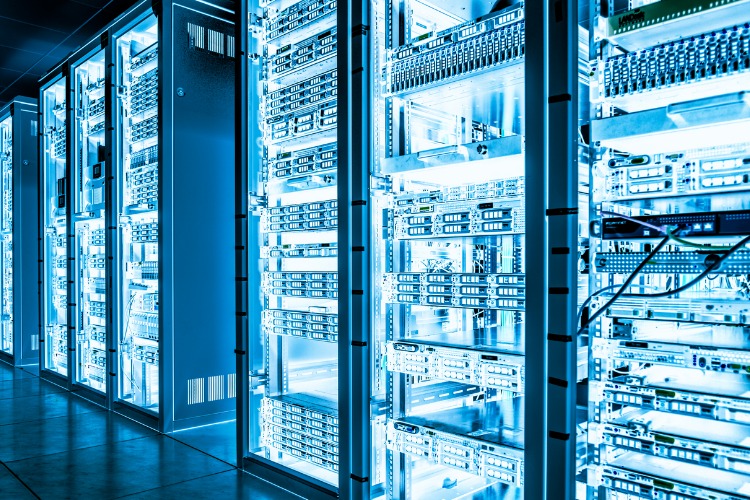Linear Track Lighting for Data Centers to Optimize Maintenance Visibility
Data centers are the backbone of modern technology, powering our digital lives. As these spaces get busier and more complex, keeping them running smoothly becomes even more important. Lighting is one key factor that's often overlooked. The right lighting helps technicians work efficiently around sensitive equipment and dense cable systems.
Implementing linear track lighting is making a noticeable difference in data center maintenance. It significantly improves visibility while addressing practical needs such as accessibility and safety. Understanding how this lighting system enhances operations emphasizes its role not just in maintenance but also in supporting the smooth and efficient functioning of the entire facility.
Why Good Lighting Matters in Data Centers
Poor lighting can create serious problems for data center operations. Bad lighting can lead to hardware damage or safety risks for people working in tight spaces filled with high-density server racks. Good lighting helps keep equipment in shape and makes it safer for technicians to do their jobs, making visibility a top priority.
Important lighting factors include color temperature, measured in Kelvins to influence ambiance, brightness levels that provide clear visibility, and color accuracy rated by the Color Rendering Index (CRI). Linear track lighting offers precise adjustments with movable fixtures and adjustable beam angles, directing light to key areas such as server cabinets and under-rack spaces, making it easier to manage complex cable layouts efficiently.
Flexibility and Adaptability of Linear Track Lighting
A big advantage of linear track lighting is its modular design, which makes it easy to adjust as data centers grow and change. As facilities expand or reconfigure, this lighting system can adapt without expensive rewiring or major changes. Fixtures can be moved or adjusted effortlessly, allowing the right areas—like server racks and cooling units—to get the right amount of light.
Energy-efficient LED technology enhances operations in data centers running 24/7 by significantly reducing power consumption compared to fluorescent lighting. With dimmable and programmable controls, brightness can be adjusted for inspections and repairs. LEDs generate less heat, minimizing temperature concerns and creating a more comfortable environment for technicians, which boosts efficiency and safety.
Smart Placement for Better Efficiency
Proper lighting in narrow aisles and under racks is essential for effective maintenance, particularly in high-density environments where cables and components are tightly packed. Linear track lighting should be installed with adjustable angles to eliminate shadows that can obscure tiny connectors or labels during inspections and repairs. Anti-glare fixtures with diffused light distribution help create a more comfortable workspace, allowing technicians to concentrate on complicated tasks without straining their eyes or being hindered by harsh lighting reflections.
Options like suspended or ceiling-mounted installations help create clear walkways, making it easier to move around. Customizable features fit different ceiling heights and layouts, while zoning lighting in key areas helps prioritize important spaces. Focusing on high-traffic areas makes sure technicians always have the visibility they need.
Long-Term Benefits of Linear Track Lighting
Switching to linear track lighting brings clear benefits to data centers. It helps technicians find and fix issues faster, reducing downtime and preventing bigger problems. Better visibility makes routine checks easier, helping staff work more efficiently. Plus, long-lasting LEDs and durable tracks mean fewer replacements and simpler maintenance.
Linear track lighting helps data centers cut energy use with LED efficiency and smart controls like occupancy sensors and automated dimming. Durable materials and long-lasting components reduce waste by minimizing replacements. These improvements can lower electricity bills and maintenance costs. Regular lighting assessments keep light focused where it's needed most, improving energy efficiency and overall operations.
Future Trends in Data Center Lighting
Smart lighting systems are changing how data centers operate by using motion sensors like passive infrared (PIR) and ultrasonic sensors to adjust lighting based on real-time activity. These sensors cut down on energy waste while keeping important spaces, such as server aisles and control rooms, properly lit. Automating lighting improves technician comfort, reduces manual adjustments, and supports sustainability efforts, meeting standards like LEED certification.
Tunable white lighting is another exciting development, helping technicians stay alert during long shifts. Adjusting light temperatures can improve focus and productivity. Future innovations might include AI-powered lighting that can assist with diagnostics and comply with changing industry standards. Investing in smart lighting systems now can help data centers stay ahead.
Switching to linear track lighting in data centers brings important benefits, making it easier for technicians to work safely and efficiently. The flexible design allows adjustments as needs change, without costly upgrades. Energy-efficient LEDs and smart controls help cut costs and create a better work environment. Placing lights in the right spots improves visibility for maintenance and reduces downtime. Regular checks and smart planning keep lighting effective where it’s needed most. Investing in better lighting now helps data centers run smoothly and stay ready for future demands.

